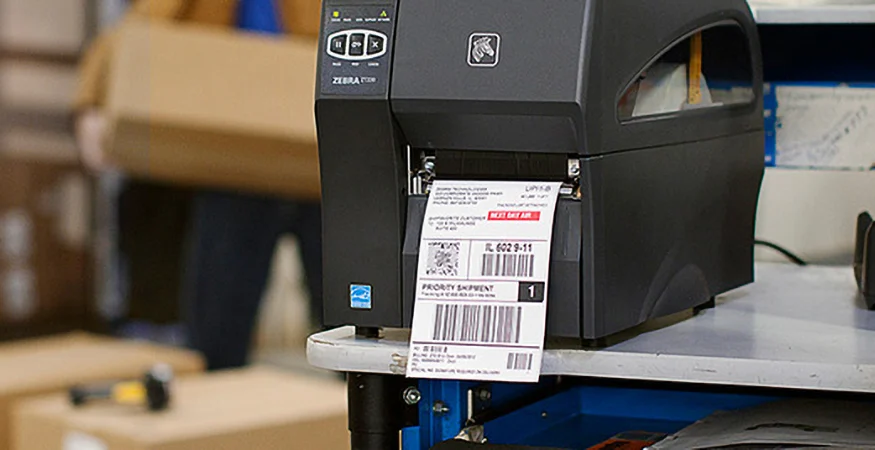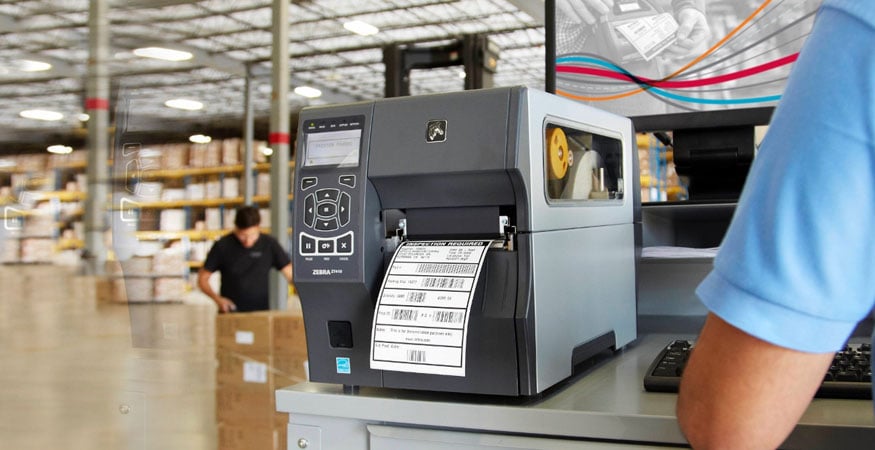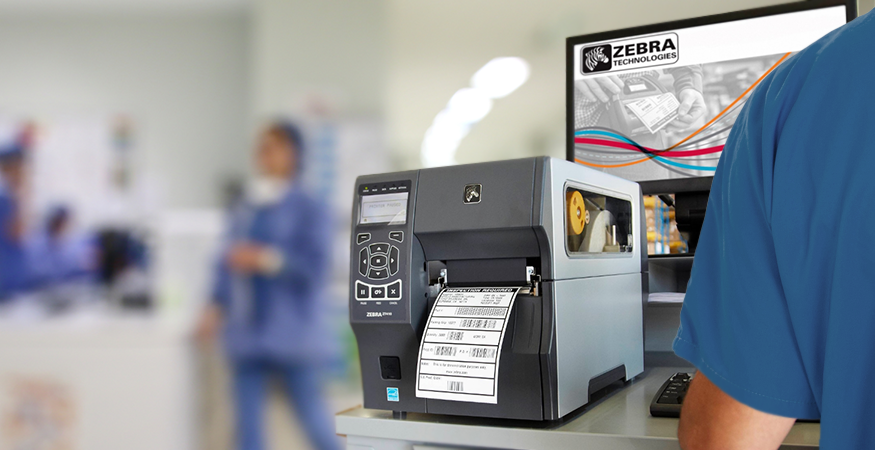Thermal printers are workhorse machines for many organizations, able to produce high volumes of labels and other media in numerous industries. They’re unique from other types of printers and offer several advantages.
Read on to learn more about thermal printers and where and when they should be used.
VIEW OUR THERMAL PRINTER SOLUTIONS THAT ARE AVAILABLE TODAY
What is a Thermal Printer?
Unlike inkjet printers that spray ink onto a piece of paper, thermal printers use a heated print head to transfer images onto various media. But how do thermal printers work? To understand, you need to examine the two types of thermal printers: direct thermal and thermal transfer.
Direct Thermal Printing Explained
Direct thermal printers print images directly on the material without the use of ribbon, toner or ink. The media itself (e.g., thermal paper, thermal labels, etc.) is heat sensitive and chemically treated so that it blackens when passed under the thermal print head. These types of media, however, are more sensitive to abrasions, light and heat, meaning the images can fade over time or the media can darken when exposed to heat or light. Cash register receipts or tickets are common examples.
Thermal Transfer Printing Explained
Thermal transfer printers use a thermal transfer ribbon with ink. Heat is applied, melting and embedding the ink into the media. This is one reason why thermal transfer printing delivers image quality and durability that is unmatched by other on-demand printing technologies. Thermal transfer printers don’t require chemically treated media and can print on a wider range of label materials including paper, polyester and plastic.
RELATED: See How Thermal Printing Benefits the Healthcare Industry
Thermal Printer Model Options and Sizes
Depending on the application and need, there are several options available.
Mobile Thermal Printers
Portable thermal printers are designed to fit in the palm of your hand and connect wirelessly for on-the-move printing needs. They’re lightweight, durable, easy to use and feature an easy-to-read display. When selecting a hand-held label printer, make sure it’s made of durable materials so that it can withstand being dropped and stand up to extreme temperatures and inclement weather when necessary. Use mobile printers for printing receipts, labels and retail tags for hospitality, healthcare, warehouse management and transportation.
Desktop Thermal Printers
Desktop printers are compact and typically offer wired and wireless connectivity options. They’re generally easy to use and load with the selected media. While quality models are reliable and cost effective, they might not handle large volume print jobs. Desktop printers are most often used in retail, healthcare, hospitality and light manufacturing.
Industrial Thermal Printers
Industrial systems are larger and more rugged, able to withstand 24/7 operation for high-volume printing needs. An example is a packaging line where thousands of labels are printed and affixed to products traveling on a conveyor belt. These systems use a print engine and integrate with various supply chain management softwares and Internet of Things (IoT) technologies to deliver data in real time. Use industrial printers to produce labels and tags for manufacturing, distribution centers, logistics, shipping and retail.
Pros and Cons of Thermal Printers
Convenience, ease of use and speed are major reasons organizations invest in thermal printing capabilities. Typically, the equipment is used for dedicated purposes like label printing or patient wristbands, so you won’t need to constantly swap out media. Individuals can print a single label with the touch of a button or a unit can be automated to print thousands in a day.
A potential disadvantage of thermal printing includes a limited color palette. Most applications like shipping labels or barcodes only require black printing, so it’s usually not an issue. While some units have color options, the selection isn’t wide ranging.
The cost of thermal printers can vary significantly as well, with some coming out on the higher end. However, because they’re so durable they require fewer repairs and last much longer than traditional printers. You also won't need to invest in print cartridges or toner, lowering the total cost of ownership over time. In the case of direct thermal technology, you’ll also have to invest in special heat-sensitive paper.
Industry Use Cases for Thermal Printers
Direct thermal printers are commonly used to print temporary documents such as receipts and tickets. They’re sometimes used in old-school fax machines, too.
The most versatile options, however, are thermal transfer machines due to their ability to stand up to sunlight, moisture or harsh conditions. They’re ideal for printing barcodes, shipping labels, inventory labels, wristbands and other media for the following industries.
Transportation and Logistics
- Picking and packing
- Shipping and receiving
- Inventory management
- Proof of delivery or returns
Manufacturing and Industrial
- Work in process
- Parts management
- Equipment labeling
- Warehousing
- Quality assurance
Retail and Hospitality
- Product pricing
- Cycle counts
- Mobile point of sale
- Receipts
- Gift and loyalty cards
- Event tickets and wristbands
- ID badges
Healthcare
- Patient identification wristbands
- Laboratory/pharmacy labels
- Asset management
- Specimen labeling
Discover how thermal printers can help your organization. Reach out to the thermal print experts at GFC to learn about a wide range of options to meet your needs.










